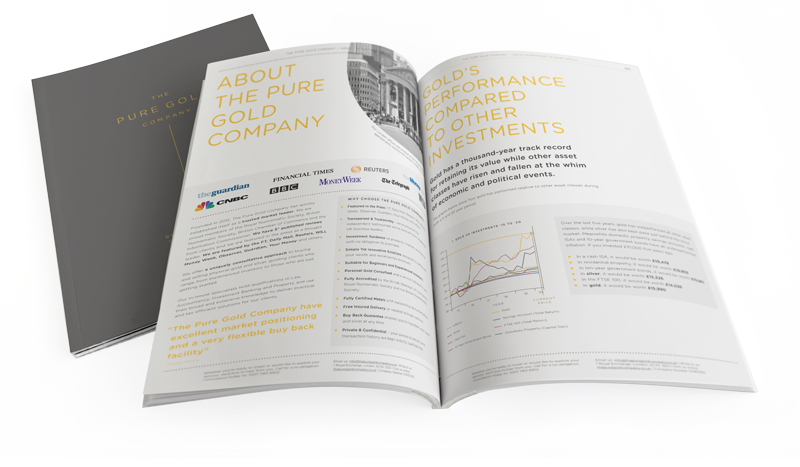Investors are continuing to pump small amounts into gold investments as the precious metal continues with its rally which began in November 2022, reaching $1,878.85 on 9 January, its highest price since May 2022.
The Royal Mint said its own sales of small gold bars (under 1 troy ounce) surged 46% month-on-month. Plus, UK investors have also benefited with gold prices in sterling up 8.9% since 31 October from November to December 2022.
At MoneyWeek we’ve always said it’s a good idea to invest in gold. As well as diversifying your portfolio, gold makes for a good inflation hedge. What’s more, in times of geopolitical uncertainty gold tends to retain its value.
Commenting on gold prices in the first week of 2023, The Royal Mint director of precious metals investment, Andrew Dickey, said: “Gold investors have significantly benefitted from a weakening dollar which is pushing gold prices higher as the Fed slows interest rate hikes. The continuing momentum into the first week of trading in 2023 will fill precious metals investors with optimism for the year ahead, particularly those seeking to hedge and diversify their investment portfolios in the wake of warnings from the IMF [International Monetary Fund] that a third of the world’s economies would be in recession this year. Historically, a mild recession has been positive for gold prices but the jury is out on whether this will be the case in 2023 and if gold will live up to its ‘safe haven’ status.”
The Royal Mint said there has been a significant increase in smaller scale gold investors who are dipping their toes into precious metals markets by investing in the yellow metal.
“1g and 5g gold bars proved particularly popular in the lead up to Christmas with those lucky enough to receive a gift of gold benefitting from an early 2023 jump in the value of their holdings,” Dickey added.
Gold is up 2.4% this year so far and would need to rise just another 10% to hit the all-time high of $2,067.15 recorded by the London Bullion Market Association on 6 August 2020, according to The Royal Mint.
“In early 2023 trading, gold market professionals will be keeping a close eye on upcoming GDP and inflation data across developed markets as well as other prominent economic indicators. Central bank signals about future policy in the weeks ahead also have the potential to further impact how the precious metal will perform during the first few months of the year.”
Last month, gold broker The Pure Gold Company reported a 419% increase in demand for gold bars and coins over the last four weeks alone as ongoing market volatility pushes investors towards gold.
It’s not just first-time investors who have turned to gold either. Central banks bought more gold in 2022 than in any other year since 1967 as they seek to protect themselves from global headwinds.
“Increasingly, people are looking at gold as an attractive investment option at a time when other options look risky,” says Josh Saul, CEO of The Pure Gold Company.”
Investors are ditching property for gold
With rising interest rates and falling house prices, investors are also looking to gold instead of property.
“We’re seeing people looking to reduce their exposure to European real estate, which is being affected by rising interest rates, increasing mortgage costs and significant cost of living pressures as inflation remains high,” says Saul.
“In fact, a number of our clients are now looking to sell property and protect the proceeds in physical gold, where prospects for a stable and reliable return remain good.”
How to invest in gold?
There are many ways to invest in gold – from buying gold bullion to shares in gold miners and gold ETFs. Take a look at our article on how to invest in gold for more information on how to get started if you are looking to add gold to your portfolio.
MoneyWeek has always recommended investors hold gold – anywhere between 5% to 10% of their portfolio, due to its status as a “safe haven” investment.
“Many people are looking for a safe haven to help weather the storm and, in many respects, this is what gold offers,” says Saul. “Gold has always been seen as a defensive asset, which offers protection in times of uncertainty and escalating inflation.
“Being invested in physical gold can offer something of an insurance policy, providing peace of mind at a time when markets for other assets are volatile or deteriorating.”
Geopolitical tensions don’t look likely to abate any time soon, which should continue to push the value of gold further as investors turn to it as a way to preserve their wealth.


